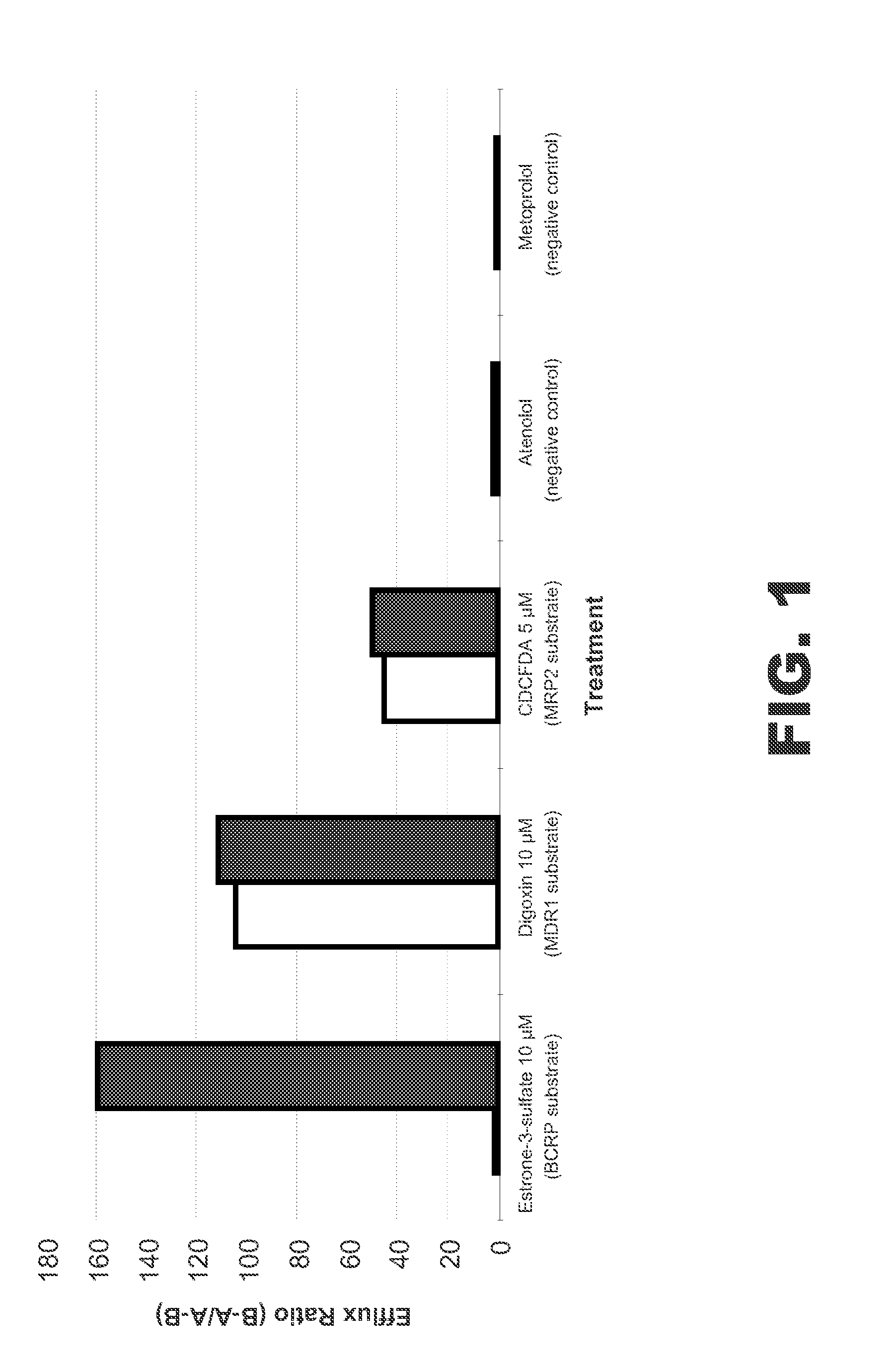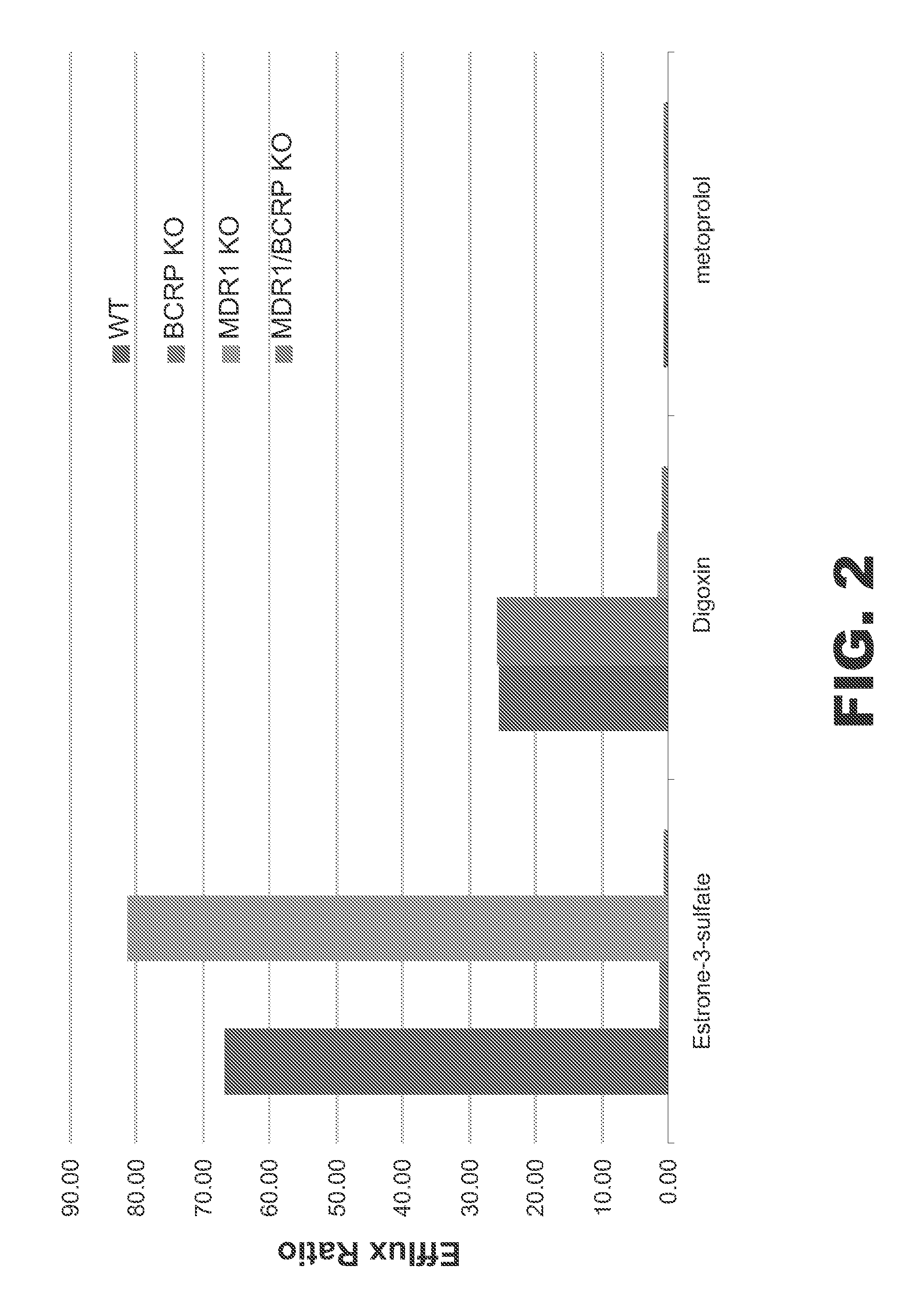Cells having disrupted expression of proteins involved in ADME and toxicology processes
- Summary
- Abstract
- Description
- Claims
- Application Information
AI Technical Summary
Benefits of technology
Problems solved by technology
Method used
Image
Examples
example 1
BCRP Transporter Knockout and Validation in C2BBe1 Cells
[0400]The wild-type BCRP gene was knocked out in C2BBe1 cells using zinc finger nuclease technology to generate a stable cell line. Cells were sorted and single cell cloned. Cells were analyzed for the desired mutations and positive clones were chosen for further expansion and analysis. Quantitative PCR was used to evaluate mRNA expression of the cell and compared to wild type cell. Whole cell lysates prepared from these clones were subjected to immunoblotting for analysis of BCRP protein expression level. BCRP knockout cells showed greatly reduced mRNA and protein expression. A single BCRP knockout cell clone was selected for functional characterization of efflux activity using several known transporter-selective substrates (e.g. estrone 3-sulfate, digoxin and CDCFDA).
[0401]Both wild type cells (parental C2BBe1 cells) and BCRP knockout cells were seeded onto 24-well transwell plates and cultured for 21 days, following a standa...
example 2
Single and Double Efflux Transporter Knockouts in C2BBe1 Cells
[0402]The BCRP and MDR1 transporter genes were individually knocked out and an MDR1 / BCRP double knockout was also generated in C2BBe1 cells using zinc finger nuclease technology. Cells were analyzed and expanded as described above and then tested for functional activity in the standard transwell assay. Two substrates were utilized—estrone 3-sulfate as a selective substrate for BCRP and digoxin as a selective substrate for MDR1. Metoprolol was used as a control. As shown in FIG. 2, 4 cell lines were assessed, including the parental cell line. With estrone 3-sulfate, a high efflux ratio was seen in the parental line and in the MDR1 knockout, while the efflux was inhibited in both the BCRP single knockout and the MDR1 / BCRP double knockout. For digoxin, the efflux ratio was high in the parental cell line and the BCRP individual knockout cells, but was inhibited in both the MDR1 knockout and the MDR1 / BCRP double knockout, as e...
PUM
 Login to View More
Login to View More Abstract
Description
Claims
Application Information
 Login to View More
Login to View More - Generate Ideas
- Intellectual Property
- Life Sciences
- Materials
- Tech Scout
- Unparalleled Data Quality
- Higher Quality Content
- 60% Fewer Hallucinations
Browse by: Latest US Patents, China's latest patents, Technical Efficacy Thesaurus, Application Domain, Technology Topic, Popular Technical Reports.
© 2025 PatSnap. All rights reserved.Legal|Privacy policy|Modern Slavery Act Transparency Statement|Sitemap|About US| Contact US: help@patsnap.com


